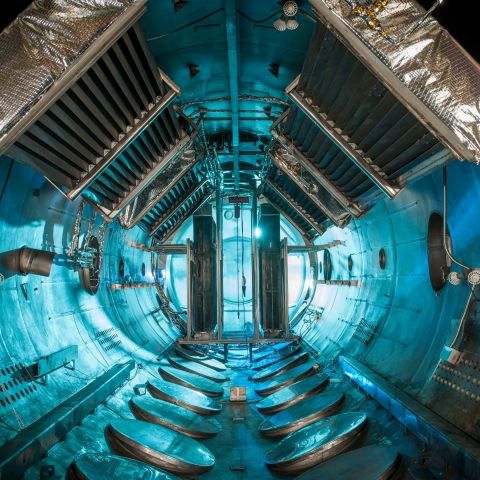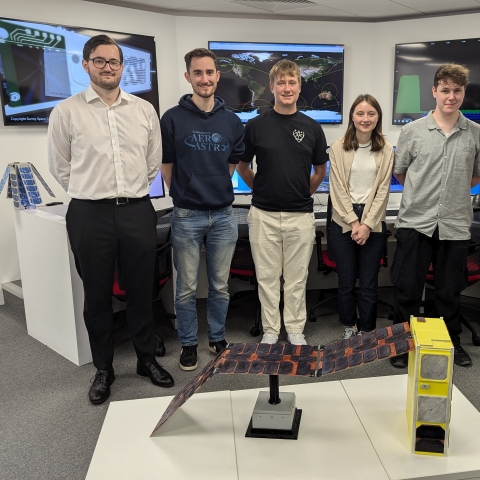

In this blog, Professor Victor Becerra, Professor of Power Systems Engineering at the University of Portsmouth, explains what makes embedded control systems so vital for the space sector
Embedded control systems are essential for the precise and reliable operation of modern technology, particularly in critical applications such as spacecraft, where they ensure the safety and success of missions. In this blog, Professor Victor Becerra, Professor of Power Systems Engineering at the University of Portsmouth, explains what makes embedded control systems so vital for the space sector, and how professionals can benefit from understanding their intricacies.
Why are embedded systems important in the space sector?
In the space sector, the role of embedded control systems cannot be overstated. These systems form the backbone of spacecraft operations, enabling everything from basic communication to complex manoeuvres that keep missions on track.
While the term 'embedded software' often comes to mind, space-bound systems are far more than just software — they represent a sophisticated integration of sensors, actuators, microcontrollers or microprocessors, and real-time computing. Let’s dive into what makes embedded control systems so vital for the space sector, and how professionals can benefit from understanding their intricacies.
What are the different types of systems and how are they used?
At their core, embedded control systems are specialised computing platforms designed to perform specific tasks with reliability and precision. These systems are indispensable for ensuring spacecraft perform essential functions autonomously, without requiring constant guidance from ground control. Imagine a spacecraft hurtling through the vastness of space; it's the embedded control systems that allow it to navigate, communicate, and perform complex tasks like adjusting its orientation or responding to changing conditions — all without direct human intervention.
A prime example is the Attitude Determination and Control System (ADCS). This system estimates and controls the spacecraft’s orientation, ensuring it remains on course. In space, even a slight deviation in orientation can lead to mission failure, so the ADCS is vital for maintaining the correct positioning of the spacecraft.
Another key system is the Environmental Control and Life Support System (ECLSS), which is especially important for manned missions. This system regulates air quality, temperature, and pressure, ensuring that astronauts can survive the harsh conditions of space. The ECLSS relies on embedded control systems to monitor and adjust these life-critical parameters in real-time.
Interestingly, some of the mechanical components within spacecraft, such as Control Momentum Gyroscopes (CMGs), also function as embedded control systems. CMGs are used to make rapid adjustments to a spacecraft's orientation, playing a critical role in precise navigation.
Challenges in the space environment
Operating in space presents unique challenges that embedded systems must overcome. The environment is unforgiving, with extremes of temperature, high levels of radiation, and the vacuum of space all posing significant risks. This makes it essential for embedded control systems to be designed with robustness in mind. Components must be radiation-hardened to withstand the damaging effects of cosmic rays, and the systems must be capable of operating in low-temperature environments without failure.
Moreover, space systems must be energy-efficient and reliable over long durations, as maintenance opportunities are rare once a spacecraft has been launched. Designers must carefully balance performance with reliability, ensuring that the system can function autonomously for extended periods, even under harsh conditions.
The importance of training in embedded systems
For professionals looking to enter or advance in the space sector, gaining an in-depth understanding of embedded control systems is invaluable. To help do this, myself and colleagues in the Space South Central region are delivering a new ‘Securing the future of space: Space Software and Data/AI’ CPD course to address these key skills gaps and help remove barriers to the sector’s growth.
Participants will learn key concepts about embedded control systems including their key characteristics and basic components, such as sensors, actuators, microcontrollers and software. They will also learn the principles of control systems and feedback, common types of control action, sampled and networked control systems. They will learn about different embedded control systems used in space applications and study detailed examples, including their implementation architecture and software.
By learning how these systems work, including real-time control, feedback mechanisms, and their use in spacecraft, participants will gain practical knowledge that can be applied to the development and optimisation of space-related technologies. For companies, this training enhances their team’s technical expertise, leading to improved efficiency, innovation, and reliability in the design and deployment of space systems.
Whether you’re a space sector company looking to upskill your employees or an individual from any sector seeking training to take the next exciting step in your career, register your interest by contacting Dan Smith: daniel.smith@port.ac.uk
Photo by NASA on Unsplash
For more on space, visit...
How we’re celebrating the final frontier this World Space Week
Look to the stars and join us for a range of exciting events marking World Space Week. This year’s theme is ‘Space and Climate Change’.
27 September 2024
5 min read

Lift off for new course as part of £2.1m funding to address skills gap in UK space sector
27 August 2024
3 minutes

Universities launch pioneering space programme to boost UK skills and graduate opportunities
Students in the Space South Central region now have the unique opportunity to design and launch a satellite mission, thanks to an ambitious new programme from three of the space cluster’s partner universities.
20 September 2024
9

